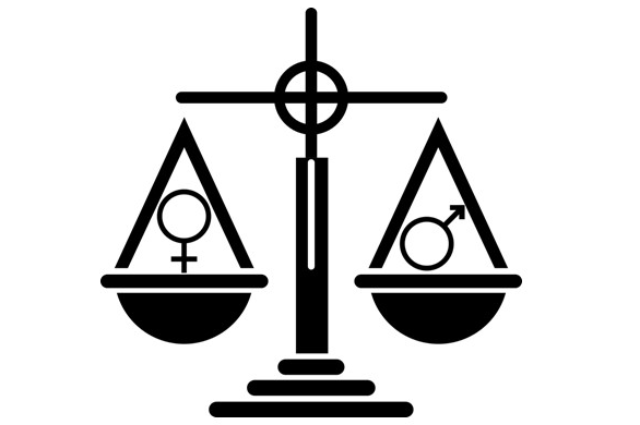
Introduction:
Gender inequalities are one of the most notable signs of inequality prevailing in the whole wide world. Gender equality is the basis of a healthy environment but social inequality is the dark truth of this contemporary society hidden behind the dark forts of the orthodox mindset of the people. The gender gap in India applies to wellness, employment, social and political differences between males and females in India. This difference or inequality does not affect women only but it also shows the adverse reaction on the men of the society as well. The legislation regarding rape, dowry, adultery, and domestic violence in India has kept the safety of women at the top but at the very same moment, these sections failed to protect the safety of men of the society.
The case of sexual allegations and rape were coming to light after the Nirbhaya Rape Case. After this many committees were constituted in order to provide safety and protection to the women section of the society. But the Unnao Rape Case and the terrible gang rape and assassination of female veterinary doctors in Telangana and similar incidents in other states give a reality check that the status of women are still vulnerable as it was on the eve of the Delhi Rape Case.
As time demanded, the Men’s Rights Movement in India has started with the aim to protect men from harassment both sexual and mental, torture, or violence. This movement claims for gender-neutral legislation as most of the laws only favors the women section of the society of India which sometimes are misused extremely blatantly.
Along with males and females, the LGBTQ Community suffers legal and social difficulties due to inequality in gender, and that too on a very large scale. After the famous, NALSA v. Union of India (AIR 2014 SC 1863), the Apex Court allowed this community to register themselves as the third gender. Similarly in 2016, after the Navtej Singh Johar & ors v. Union of India the Secretary Ministry of Law and Justice (AIR 2018 SC 4321; W.P. (Crl.) No. 76 of 2016; D.No. 14961/2016), the old and regressive Section 377 of Indian Penal Code got repealed and declared as unconstitutional.
Law Reforms:
With time and according to the requirement and needs of society, the major laws got amended to decrease the gender disparity of the society.
- THE CRIMINAL LAW (AMENDMENT) ACT 1983: - This amendment of 1983 introduced Camera Rape Trial in the proceedings and declare disclosing the name of the victim as an offence.
- THE INDIAN EVIDENCE (AMENDMENT) ACT 2002: - This amendment prohibits the defense to question from the prosecutrix about her general moral character as well as sexual history at the time of cross-examination.
- THE CRIMINAL LAW (AMENDMENT) ACT 2013: - This amendment introduced special provisions regarding cases of acid attack, disrobing a woman, stalking, voyeurism, trafficking, and sexual harassment.
- THE 172nd LAW COMMISSION REPORT: - This report recommended that the law dealing with rape cases must be of gender-neutral nature for both the victim as well as the offenders. The report of the Justice Verma Committee recommended a gender-neutral law only for victims and according to that report, the law for the offender should be gender-specific.
Prejudiced Indian Penal Code:
The Indian Penal Code 1860, names all the crimes and their punishments for which any person who is committing the crimes will be held liable. According to Section 2 of the Code of 1860, every person is liable for the punishment for every act or omission which is contrary to the provisions. While interpreting this section, it is clear that the law does not distinguish the criminal on the basis of their gender. If a person commits an offence, he or she will be liable for the punishment irrespective of their gender. But stereotyping men as criminals sometimes fortifies women for the same. Women too can commit crimes because neither criminals nor the law has any gender.
Laws that typically favors women:
There are many instances and laws that consider only males can commit such heinous crimes. But the major four are: -- SECTION 304 b of IPC: Dowry Death
- SECTION 354 of IPC: Assault or criminal force to women with intent to outrage her modesty.
- SECTION 375 of IPC: Rape; according to this section, only males can be a rapist and females can only be a victim of rape.
- SECTION 498a of IPC: Cruelty against women
Joseph Shine v. Union of India (AIR 2018 SC 4898; (2019) 3 SCC 39): In this case, the bench of 5 Judges declared Section 497 of IPC unconstitutional. According to Supreme Court, this section is arbitrary in nature and violates Articles 14 and 15 of the fundamental rights of citizens as this section of IPC discriminates between men and women. Further, in this case, courts observe that both spouses are equal. Husband is not the master and the old notion that wife is always the victim is no longer valid.
Transgender’s Right in India:
Earlier, even fundamental rights were absent for the transgender community of India. But after the famous NALSA v. Union of India (AIR 2014 SC 1863) case, the Supreme Court gives legal recognition to this community as the third gender. The judgment of Navtej Singh Johar v. Union of India (AIR 2018 SC 4321; W.P. (Crl.) No. 76 of 2016; D.No. 14961/2016) decriminalized Section 377, which give them the right to choose their partners. With the passage of time, the Government too passed certain bills in order to protect the interest of this community.
Conclusion:
Most laws are equal for every gender of society, but few of them, especially laws related to dowry, rape, acid attack, and domestic violence consider only females as victims. But it is high time that these laws should be gender-neutral by accepting the fact that anyone can be a victim and perpetrator irrespective of their gender.
